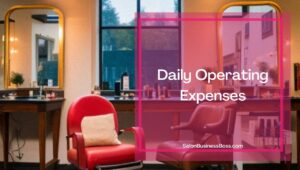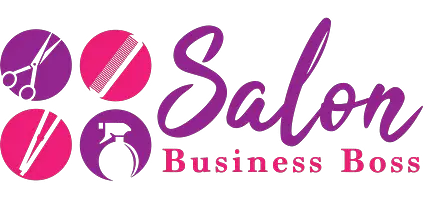Tax-deductible items for hairstylists vary depending on your type of employment. Salon employees will have significantly fewer tax-deductible expenditures than salon owners. Hairstylists who work as independent contractors will fall somewhere in between.
Hairstylists have up to three checklists of tax-deductible business expenses to examine and consider when filing income taxes each year.
Salon Employee Checklist
- Tuition and expenses for cosmetology school
- Tuition and fees for continuing education classes
- Cosmetology tools for school and work
- Fees for licensing
- Uniforms and shoes
Hairstylist Independent Contractor Checklist
- Salon Employee Checklist
- Licensing and small business fees
- Booth rental fees
- Hair products when not supplied by the salon space
- Appointment books, calendars, or apps for scheduling clients
- Business cards, advertising materials, marketing
Self-Employed Salon Owner
- Salon Employee Checklist
- Independent Contractor Checklist
- Depreciation Checklist
- Daily operating expenses
- Salon products
- Office supplies
- Insurance
Using these three hairstylist checklists as a guide, you can build a comprehensive tax deduction list that fits your employment status. By taking advantage of all the tax deductions and credits a hairstylist can claim, you will have more money in your pocket at the end of the tax season.
Quick Note About Deductions vs Credits
Tax deductions reduce the total amount of your taxable income. The amount of the deduction is subtracted from your adjusted gross income. The remaining total is your taxable income that will be assessed according to your earnings bracket.
Tax credits, on the other hand, are subtracted from the taxable income total after the tax rate has been calculated. While this may impact which tax bracket your income falls under, tax credits have a greater impact on reducing the total tax bill owed.
The following table demonstrates the difference between a tax deduction and a tax credit. . Your income tax bracket is set by the Federal Government. In this example, we will use the same tax rate for both scenarios to illustrate the effects of deductions and credits independently.
|
Tax Deduction |
Tax Credit |
|
|
Adjusted Gross Income (AGI) |
$75,000 |
$75,000 |
|
Tax Deduction of $5000 |
– $5000 |
X |
|
Taxable Income |
$70,000 |
$75,000 |
|
Income Tax Rate |
30% |
30% |
|
Tax Bill Before Credit Applied |
$21,000 |
$22,500 |
|
Tax Credit |
X |
– $5,000 |
|
Final Tax Bill |
$21,000 |
$17,500 |
As you can see from the table, a Tax Credit of $5000 makes your final bill $3,500 less than a $5000 Tax Deduction. Of course, by being able to file both tax deductions and tax credits, your final tax bill will be reduced even further.
Salon Employee Checklist
You are a salon employee hairstylist if your place of employment had you fill out a W-4 form when you were hired. As an employee, you receive an hourly wage and all applicable taxes are taken out of your paycheck. When it’s time to file your income taxes, you will obtain a W-2 form, via mail or online, that lists all of your wages and earnings you received from the employer.
Tips should be reported to your employer so that they are properly taxed along with your regular wages. If your employer does not keep track of the tips you earned, you will need to file Form 4137 in addition to your standard income tax form. Failing to do so could result in legal trouble and/or fines.
Salon Employee Tax Credits

Hairstylists who work as an employee for a salon can apply the Lifetime Learning Tax Credit of up to $2000 per tax return. Money spent on tuition and supplies for cosmetology school can be applied to this tax credit. You must be enrolled in a school that is a participant of the United States Department of Education financial aid program to qualify for the credit.
If your cosmetology school takes part in the federal program, you will receive Form 1098-T to file with your other tax forms. Tuition paid to schools that don’t participate in the federal financial aid program can be claimed as a deduction if you’re an independent contractor or a self-employed salon owner.
This tax credit can also be applied to expenses incurred from continuing education courses required for maintaining your cosmetology license. As before, the school you attend must be engaged in the federal financial aid program. Otherwise, these fees can be added to your tax deductions list, like independent contractors and self-employed salon owners will do.
Hairstylist Tools
Cosmetology tools and equipment purchased for school could be included under the Lifetime Learning Credit. If, however, you have already met the maximum limit of $2000, you can itemize them as business expenses. That way you will be able to include them in the deductions section of your income tax form.
Licensing Fees
Every state requires a hairstylist to maintain a current cosmetology license annually. This license is obtained from your state’s Board of Cosmetology. This regulatory board is administered by your state’s Department of Business and Professional Registration. Fees for a cosmetology license average around $85 per year.
Uniforms and Shoes
As before when talking about cosmetology tools, the cost of uniforms and shoes for school qualify towards the Lifetime Learning Credit. If you already reached the threshold, they would revert to the itemization list of tax-deductible items. Use Schedule A for listing these as a business loss when filing as an employee.
Hairstylist Independent Contractor
If you completed the W-9 form when you were hired, you are working as an independent contractor. As such, you typically set your own hours and schedule your own clients for their hair appointments. Hairstylists who work as independent contractors set their own rates and pay the salon owner a booth rental fee.
As an independent contractor hairstylist, you will use Form 1099-NEC when filing your federal income taxes each year. The IRS recently switched to this form to clear up issues related to filing dates for specific instances. This revived form has replaced the old 1099-MISC previously used by self-employed individuals.
Independent Contractor Tax Credits
The Lifetime Learning Credit can be utilized by independent contractors for their tuition and expenses for cosmetology school and continued education. Hairstylists who are self-employed can qualify for up to the $2000 maximum credit on items purchased for schooling. Just like salon employees, independent contractor hairstylists can earn monetary credit for the purchase of tools and equipment used in cosmetology school.
Cosmetology Tools

Every hairstylist develops a preference for certain styles of cosmetology tools. Factors such as grip, weight, and length all have an impact on the tool’s performance. They also have an effect on the hairstylist in the form of fatigue from use and frustration from the difficulty of function.
Being able to pick and choose the tools you prefer is one of the great benefits of the cosmetology field. The freedom and flexibility to develop your own style and artistic expression begin with the tools you wield. Knowing that you are able to list them as tax-deductible purchases makes investing in high-quality equipment a top priority.
Licensing and Small Business Fees
In addition to your cosmetology license, your state may require you to obtain a small business license when working as an independent contractor. Any fees relating to the legal operation of a hairstylist business can be included in this tax deduction item. Self-employed individuals may encounter requirements different from those who work as independent contractors.
Here’s what you need to know to open a hair salon!
Work Wardrobe
As an independent contractor, you will have more liberty to choose what to wear. The clothes you wear to perform your job qualify as a tax deduction regardless of whether it’s a company uniform or casual t-shirt and jeans. Comfortable shoes and clothing are part of what allows a hairstylist to do their best at work.
You can include the cost of cleaning or repairing your work clothes on your itemized list of business expenses. Drycleaning or shoe repair are considered tax-deductible expenses if the clothes are worn only for employment purposes. Investing in quality clothing and footwear may cost a bit more initially but will pay dividends over the long term.
Booth Rental
While a hairstylist employee is provided a workstation and clients, independent contractors rent a booth, or chair as it is often called, within the salon of independent hairstylists. Each stylist pays a predetermined fee to do business in the salon. It is up to the individual hairstylist contractors to bring in customers for their own station.
Booth rental fees can be set on an hourly, daily, weekly, or monthly rate depending on your contract agreement. This allows for greater flexibility and versatility for both the contractor and the salon. It gives the hairstylist freedom to set their own schedule and it offers the salon owner the opportunity to rent out the same chair to multiple stylists.
Hair Products
Independent hairstylists who work in someone else’s salon will likely be provided with the salon’s brand of products to be used at your booth. Some hairstylists who work as independent contractors may have to supply everything they need for their station. If you are fully self-employed or a salon owner, then hair products will definitely be included on your tax deduction itemization list.
Bookkeeping
Hairstylists who work as independent contractors need to keep track of both their scheduled appointments and their income. You will want to have a well-organized system that can manage booking clients’ appointments and contact information. In addition, as an independent hairstylist, it will be your responsibility to keep track of the money you earn and the expenses you incur.
Appointment books, calendars, or apps for your phone can all be included in the business expense of bookkeeping. Receipt books you purchase or credit card systems you use to conduct business qualify as tax-deductible expenditures. Be sure to incorporate a method for storing receipts of your business purchases to file with your taxes.
Marketing
Business cards and other advertising materials are an expense that can be included in your tax returns. The cost of print or online marketing campaigns to boost your customer base is also tax-deductible. Even something like a car wrap or magnet advertisement are expenses that can reduce your tax bill at the end of the year through a tax deduction.
Self-employed Salon Owner
As a self-employed hairstylist who owns a salon or works in-home, income taxes are best filed quarterly using Form 1040-ES. These payments are made based on an estimated tax owed that is split into 4 payments throughout the year. The guestimate of your full tax bill comes from knowing your previous year’s income and tax bill.
If you have forecasted an increase in your income compared to last year, you can pay more than before to account for the raise. Likewise, if you know that you will be making less or plan to work less, you can reduce the amount of estimated tax you pay each quarter. The IRS recommends overpaying versus underpaying since you will incur a penalty at the end of the tax year in the event you didn’t pay enough.
Depreciation Checklist
Owning a salon typically involves purchasing large ticket items, especially when you first launch your business. Buying the property, constructing a building, and furnishing the salon are all major expenses that occur when starting out as a salon owner. While these are business expenses by definition, they are treated differently than standard tax-deductible items.
Items purchased for the salon business that are intended to last for years fall under the tax process of depreciation. In this method, the tax deduction is spread out over several years. The value of the deductions and the time it takes to complete depends on the tax classification of the item.
Daily Operating Expenses

Also referred to as a business’s overhead, daily operating expenses are a tax-deduction under the heading of business losses. Operating costs include everything from the monthly lease and utilities to paying the crew who works in your salon. Other operating expenses that are tax-deductible are hair and style magazine subscriptions.
The IRS defines tax-deductible business expenses as any item that is ordinary and necessary for the conduction of your trade. That means you can include the music subscription playing through the salon’s sound system. You could even list the satellite television package you purchased for the patrons in your sports-themed hair salon. Just make sure to include the big screen TVs you bought in your depreciation list.
Salon Products
As the owner and operator of your own business, you have complete control of the hair products used in your salon. You are the one who must secure reliable vendors to deliver high-quality salon products for both in-house use and available for purchase. You don’t want to have an amazing product that’s always running out too soon. Nor do you want to end up with a stock-pile of bad products no one will buy.
Whatever the case may be, listing all of your salon’s hair care and beauty products in your tax deduction list is important. Both the products used by the hairstylists and the items purchased by customers were first bought by you, the owner. Money made from sales will be factored into your income while products that expire or are otherwise thrown out will go under business losses.
Office Supplies
Every business has bookwork to keep things running smoothly. Calendars and appointment books are a common expense for salon owners. In addition, computer paper to create schedules and print paychecks is an example of office supplies found in a salon. Don’t forget to keep plenty of pens on hand and mailing supplies like postcard thank yous to send on special occasions.
Insurance
The final category of tax-deductible business expenses for a salon owner is insurance. As a salon owner, you will have to purchase liability insurance and other forms of protection for your business. If you have employees working in your salon, chances are you will also be required to provide health insurance for them.
Other Expenses
- Building repairs and maintenance
- Travel expenses for conventions
- Lawyer fees and accountant services
- Home office expenses
Related Questions

Can I deduct the mileage on my vehicle that I drive to work?
Only if you use your personal car to drive to the home or office of your client in order to perform your work. If you are simply driving from home to the salon and back you cannot count that as a business expense.
The IRS doesn’t consider driving to work tax-deductible unless your travel takes you to the client directly rather than coming to your place of employment. You may be able to deduct such items as parking garage fees or toll road bills but check with a tax expert to be sure.
Are there any special deductions if I work in a home salon?
If you have a salon in your home, the IRS allows you to deduct a portion of your home’s rent or mortgage payment and utilities as business expenses. To qualify, a portion of your home must be exclusively used for the salon business. The IRS is very strict with regard to the restricted use of space. For example, you can not use your family kitchen as a daytime spa where you will later cook your family’s dinner. This violates the exclusionary clause of the home office deduction.
Do all states have a state income tax?
Not every state in the United States requires its residents to pay a state income tax. Florida is one example of a state that doesn’t have a state income tax. Check the table below to determine if your state is one of the 33 that enforces a state-level income tax and the tax rate they charge. You will notice that some states have multiple tax brackets and others have a flat rate state income tax.
For this article, I have listed the income tax rates for single filers. Some states’ tax rates for married filers may be different than what’s shown here.
|
State |
Income Bracket |
Tax Rate |
|
Alabama |
|
|
|
Arizona |
|
|
|
Arkansas |
|
|
|
California |
|
|
|
Connecticut |
|
|
|
Delaware |
|
|
|
D.C. |
|
|
|
Georgia |
|
|
|
Hawaii |
|
|
|
Idaho |
|
|
|
Illinois |
|
|
|
Indiana |
|
|
|
Iowa |
|
|
|
Kansas |
|
|
|
Kentucky |
|
|
|
Louisiana |
|
|
|
Maine |
|
|
|
Maryland |
|
|
|
Massachusetts |
|
|
|
Michigan |
|
|
|
Minnesota |
|
|
|
Mississippi |
|
|
|
Missouri |
|
|
|
Montana |
|
|
|
Nebraska |
|
|
|
New Hampshire |
|
|
|
New Jersey |
|
|
|
New Mexico |
|
|
|
New York |
|
|
|
North Carolina |
|
|
|
North Dakota |
|
|
|
Ohio |
|
|
|
Oklahoma |
|
|
|
Oregon |
|
|
|
Pennsylvania |
|
|
|
Rhode Island |
|
|
|
South Carolina |
|
|
|
Tennessee |
|
|
|
Utah |
|
|
|
Vermont |
|
|
|
Virginia |
|
|
|
West Virginia |
|
|
|
Wisconsin |
|
|
Looking to start your own Salon? Get the documents you need to get organized and funded here.
Please note: This blog post is for educational purposes only and does not constitute legal advice. Please consult a legal expert to address your specific needs.

About the author. Entrepreneur and Salon Business Fan.
Hi! I am Shawn and I am a happy individual who happens to be an entrepreneur. I have owned several types of businesses in my life from a coffee shop to an import and export business to an online review business plus a few more and now I create online salon business resources for those interested in starting new ventures. It’s demanding work but I love it. I do it for those passionate about their business and their goals. That’s why when I meet a salon business owner, I see myself. I know how hard the struggle is to retain clients, find good employees and keep the business growing all while trying to stay competitive.
That’s why I created Salon Business Boss: I want to help salon business owners like you build a thriving business that brings you endless joy and supports your ideal lifestyle.


